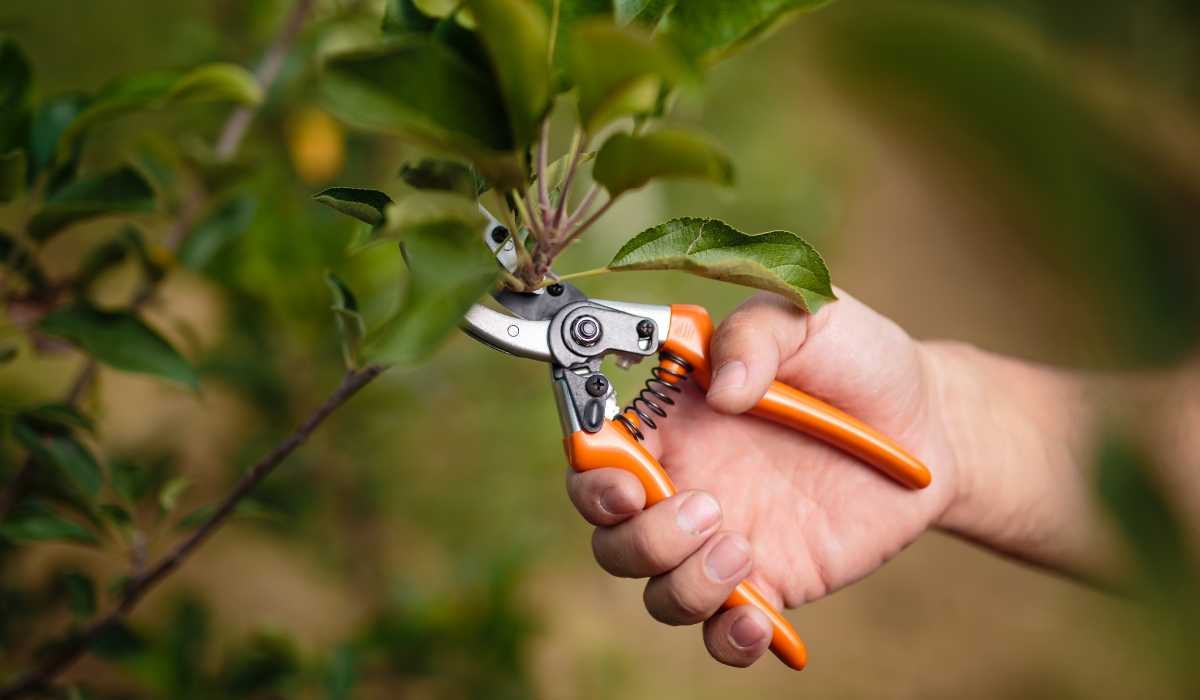Archive for Landscape Design
Why Fall is the Best Time to Plant Trees and Shrubs

1. Cooler Temperatures, Less Stress
2. Warm Soil Promotes Root Growth
3. Less Watering Required
4. Fewer Pests and Diseases
5. Steps for Successful Fall Planting
- Choose the Right Plant: Select species and varieties that are well-suited to your region and site conditions.
- Dig Properly: Make the hole twice as wide as the root ball, but no deeper. Loosen the soil on the sides to encourage outward root growth.
- Plant at the Correct Depth: The top of the root ball should be level with the surrounding soil.
- Backfill and Water Well: Replace the soil, gently tamping it down to remove air pockets. Water thoroughly after planting.
- Mulch: Add a 2–3 inch layer of mulch around the base (but not against the trunk) to retain moisture and regulate soil temperature.
6. Plan for Ongoing Care
Trust Your Local Experts
Summer Sanctuary: Maximizing Your Outdoor Living Space for June Enjoyment

June in California signals the true start of summer, beckoning us outdoors to soak up the long, sun-filled days and balmy evenings. At DK Landscaping, we believe your outdoor living space should be an extension of your home – a true summer sanctuary for relaxation, entertainment, and making cherished memories. Here’s how to maximize your patio, deck, or garden nook for peak June enjoyment.
Embrace the Shade: Your Summer Essential
California sunshine is glorious, but consistent shade is crucial for comfortable summer living. Consider elegant and effective shade solutions for your outdoor areas. A well-placed pergola or arbor can provide structural beauty while supporting climbing vines for natural shade. Retractable awnings offer flexible sun protection, allowing you to choose sun or shade at will. For instant relief, large cantilever umbrellas are versatile and can be moved to where shade is most needed throughout the day. Don’t underestimate the cooling power of strategic tree planting for long-term shade solutions.
Illuminate the Evening: Magical Outdoor Lighting
As the sun sets, good lighting transforms your outdoor space into an enchanting retreat. String lights draped overhead create a festive, whimsical ambiance perfect for gatherings. Pathway lighting ensures safe navigation and highlights key features of your landscape. Uplighting on trees or architectural elements adds dramatic flair, while solar-powered lanterns offer eco-friendly pops of light. For dining areas, consider dimmable overhead fixtures to control the mood. Thoughtful lighting extends your enjoyment well into the night.
Comfort is King: Seating for Relaxation and Entertaining
Uncomfortable seating will quickly empty your summer sanctuary. Invest in comfortable, weather-resistant furniture that invites lounging and lingering. Deep-seated sofas and armchairs with plush, quick-drying cushions are ideal for relaxation. For dining, ensure your table and chairs are sturdy and adequately sized for your usual guest count. Don’t forget accent tables for drinks and snacks, and perhaps a hammock or a comfortable daybed for ultimate repose. Arrange your furniture to encourage conversation and provide clear pathways.
Low-Maintenance Greenery: Ambiance Through Planting
While you want lushness, summer is not the time for high-maintenance plants in your outdoor living areas. Opt for drought-tolerant, low-maintenance plantings in pots and containers to add bursts of color and texture without constant fuss. Succulents, ornamental grasses, lavender, and bougainvillea thrive in the California sun and require minimal water. Herbs like rosemary and basil not only look great but offer delightful aromas. Use strategic planting to define spaces, add privacy, and create a soft, inviting backdrop to your summer sanctuary.
By focusing on effective shade, enchanting lighting, luxurious comfort, and smart planting, your outdoor living space will become the ultimate summer destination for friends, family, and peaceful solitude. Let DK Landscaping help you design and implement the perfect summer sanctuary for your California home.
Designing Your Dream Spring Garden: Inspiration from DK Landscaping for March
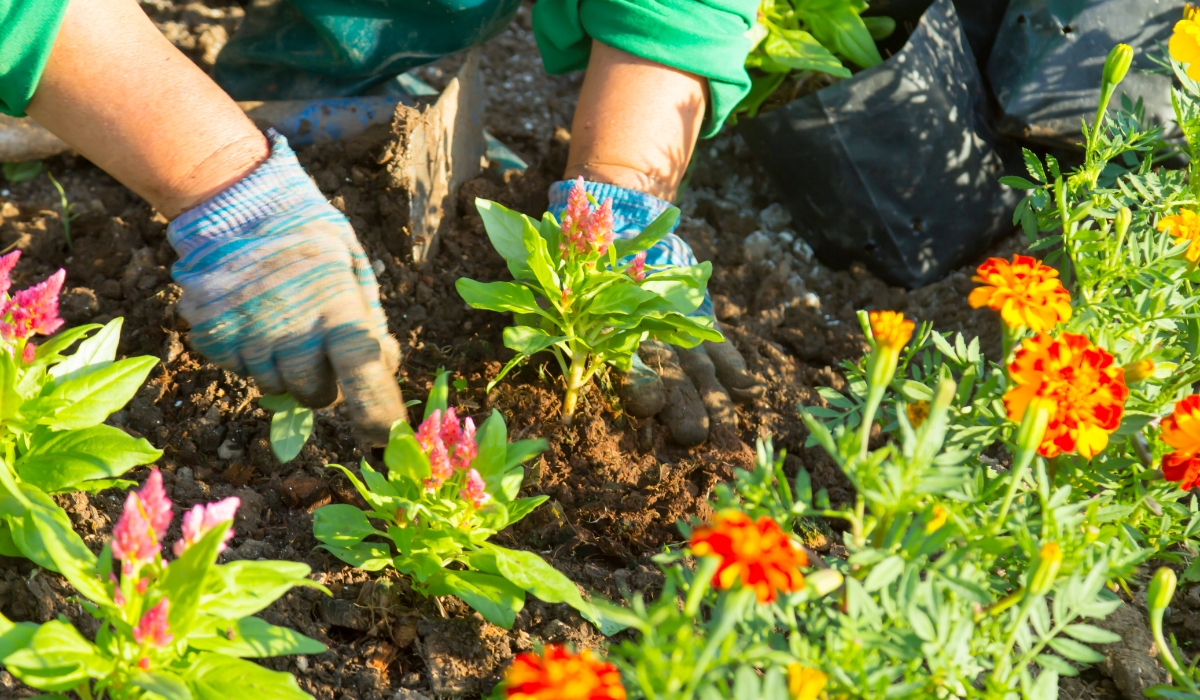
As the landscape awakens in March, it’s the perfect time to not only tend to essential gardening tasks but also to dream and design the spring garden you’ve always envisioned. At DK Landscaping, we believe that thoughtful planning and creative inspiration are key to creating outdoor spaces that bring joy and beauty throughout the season.
This March, let’s explore some inspiring ideas and design considerations to help you craft your dream spring garden, with guidance and inspiration from the experts at DK Landscaping.
Embracing Color and Fragrance:
- Layering Spring Blooms: Create a tapestry of color by layering different spring-blooming plants with varying heights and bloom times. Start with early bloomers like daffodils and tulips, followed by mid-season favorites like irises and peonies, and then late-spring beauties like roses and foxgloves.
- Adding Fragrant Flowers: Engage your senses by incorporating fragrant spring blooms such as lilacs, hyacinths, sweet peas, and stock. Place them near walkways, patios, or windows where their delightful scents can be easily enjoyed.
- Creating Themed Color Palettes: Consider designing specific garden areas with a cohesive color palette. For example, a serene blue and white garden with forget-me-nots, white tulips, and bluebells, or a vibrant warm-toned bed with red poppies, orange calendula, and yellow daffodils.
Designing for Structure and Flow:
- Defining Garden Beds and Borders: Create clear definition between your lawn, pathways, and planting beds using edging materials like stone, brick, or metal. This adds a sense of order and visual appeal to your garden.
- Incorporating Vertical Elements: Add height and visual interest by incorporating vertical elements such as climbing roses on trellises, clematis vines on arbors, or tall flowering spires like delphiniums and snapdragons.
- Creating Pathways and Focal Points: Design inviting pathways that encourage exploration of your garden. Create focal points with striking plants, unique sculptures, or charming water features to draw the eye and add personality.
Considering Functionality and Enjoyment:
- Designing Outdoor Living Spaces: Extend your living space outdoors by creating comfortable seating areas, dining nooks, or even an outdoor kitchen. Consider the placement of these areas in relation to sunlight, shade, and prevailing winds.
- Attracting Pollinators: Design your garden with pollinators in mind by including a variety of nectar-rich flowers that attract bees, butterflies, and hummingbirds. Include native plants whenever possible.
- Creating a Cutting Garden: If you enjoy bringing fresh flowers indoors, dedicate a section of your garden to growing cut flowers like zinnias, cosmos, sunflowers, and dahlias.
Getting Started with Your Spring Garden Design:
- Assess Your Existing Space: Take a good look at your current garden, noting sunlight patterns, soil conditions, and existing plants.
- Gather Inspiration: Browse gardening books, magazines, websites, and social media platforms for ideas and inspiration that resonate with your style and local climate.
- Sketch Your Ideas: Create a rough sketch of your desired garden layout, noting the placement of different plants and features.
- Consult with the Experts: If you need help bringing your spring garden vision to life, the design team at DK Landscaping is here to provide expert advice and create a customized plan for your outdoor space.
Let DK Landscaping help you design and cultivate the spring garden of your dreams this March!
Contact us today for a consultation and let’s bring your vision to full bloom.
Spring Awakening: Essential March Gardening Tasks with DK Landscaping
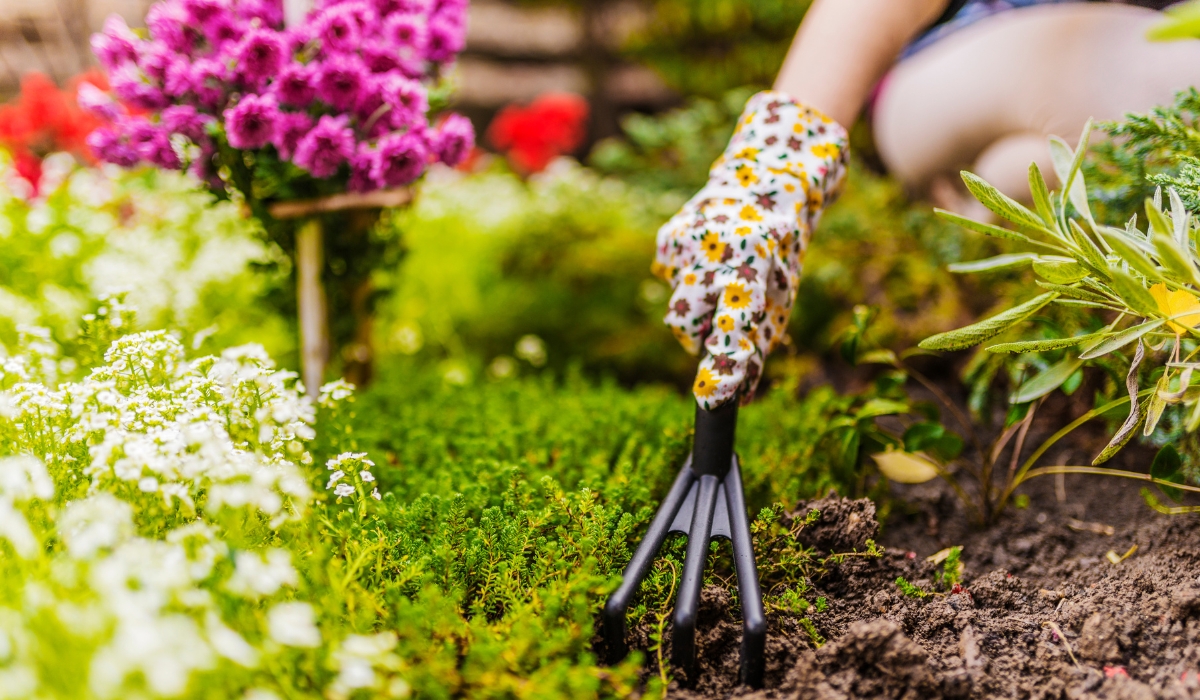
Ah, March! The air is alive with the promise of new beginnings, the days are noticeably longer, and a vibrant energy returns to our California landscapes. At DK Landscaping, we eagerly anticipate this time of year, as it marks the true awakening of our gardens.
March is a bustling month for gardeners, filled with exciting opportunities to nurture new growth, plant for the season ahead, and revitalize our outdoor spaces after the quieter winter months. Let’s dive into some essential March gardening tasks to ensure your landscape flourishes this spring and beyond, courtesy of your friends at DK Landscaping.
Embracing the Burst of New Growth:
- Fertilizing for Spring Vigor: As plants emerge from dormancy and begin their active growth cycle, they benefit from a boost of nutrients. Apply a balanced, slow-release fertilizer to your lawns, trees, shrubs, and flower beds. Follow the product instructions carefully.
- Spring Pruning (Selective): Now that spring-flowering shrubs like azaleas, rhododendrons, and lilacs have finished their bloom (or are just finishing), it’s the ideal time to prune them. Prune to shape, remove dead or crossing branches, and encourage bushier growth for next year’s floral display. Avoid heavy pruning now, as you could remove developing flower buds.
- Dividing Perennials: Many perennials that have become overcrowded can be divided in early spring. This rejuvenates the plants, encourages more blooms, and allows you to expand your garden or share with friends. Look for plants with multiple crowns that can be easily separated.
Planting for a Colorful Season:
- Planting Warm-Season Vegetables: With the soil warming up, March is the perfect time to start planting many of your favorite warm-season vegetables, such as tomatoes, peppers, eggplants, zucchini, and cucumbers. Be sure to check your local frost dates and protect young plants if unexpected cold snaps occur.
- Direct Sowing Annual Flower Seeds: Sow seeds directly into your garden beds for a continuous display of colorful annual flowers like zinnias, cosmos, marigolds, and sunflowers. Choose varieties that thrive in your local climate and soil conditions.
- Planting Summer-Blooming Bulbs & Tubers: Get a head start on summer beauty by planting bulbs and tubers like gladiolus, dahlias, lilies, and cannas in March.
Lawn Care for a Lush Carpet:
- Lawn Aeration: If your lawn experienced heavy foot traffic or the soil feels compacted, consider aerating it in early March. Aeration improves air circulation, water penetration, and nutrient uptake, leading to a healthier and greener lawn.
- First Mowing & Edging: As your lawn begins to actively grow, it’s time for the first mowing of the season. Set your mower blades to a higher setting for the initial cut and maintain a consistent mowing schedule. Don’t forget to edge along walkways and garden beds for a crisp, clean look.
- Weed Control & Overseeding (if needed): Address any winter weeds that have emerged in your lawn. If your lawn is thin or patchy, early March is a good time to overseed with a suitable grass seed variety.
Ongoing Garden Maintenance:
- Continue Weed Control: Stay vigilant with weed control throughout March. Young weeds are easier to remove than established ones.
- Monitor for Pests & Diseases: As new growth emerges, keep an eye out for any signs of early pest infestations or diseases. Addressing problems promptly can prevent them from spreading.
- Watering as Needed: While spring rains are common, monitor soil moisture levels and water deeply when necessary, especially for newly planted items.
Embrace the Energy of Spring with DK Landscaping:
March is an exciting time to be a gardener in California, and DK Landscaping is here to help you make the most of this vibrant season. Whether you need assistance with spring planting, pruning, lawn care, or designing a stunning spring landscape, our experienced team is ready to bring your vision to life.
Contact DK Landscaping today to discuss your March gardening needs and let us help your garden thrive!
Love Your Landscape: Enhancing Beauty and Function in February with DK Landscaping
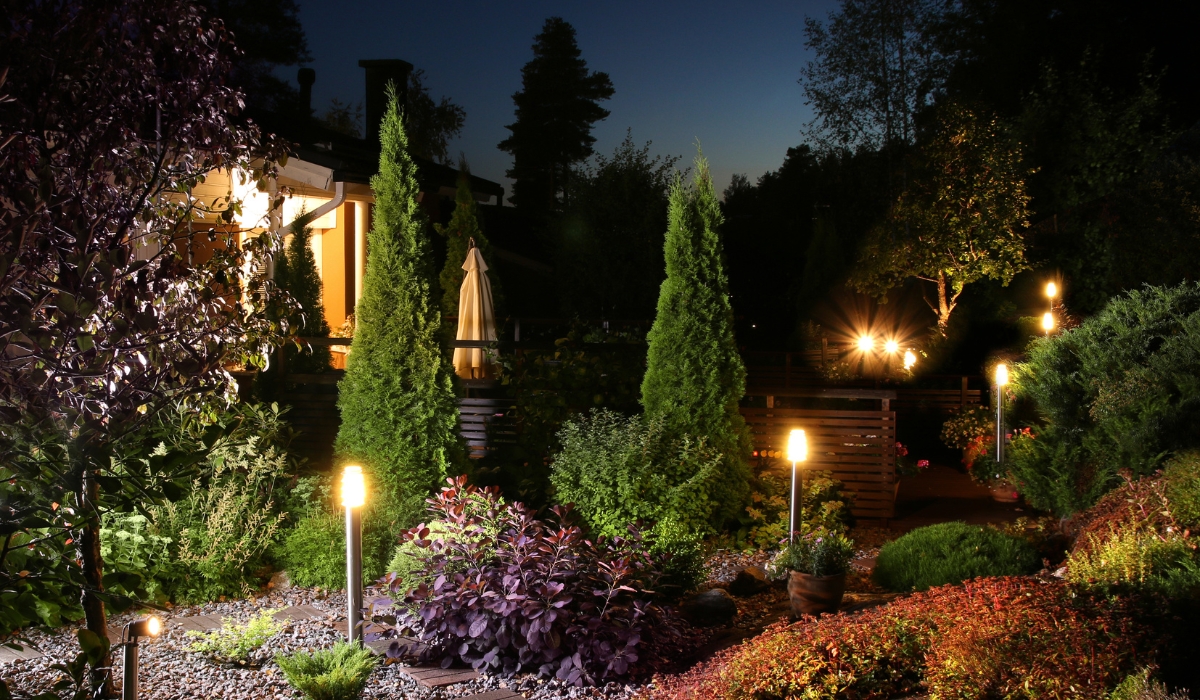
February, often associated with romance, is also a wonderful time to show some love to your landscape. Beyond the essential gardening tasks, this month provides an opportunity to focus on enhancing both the beauty and functionality of your outdoor spaces. At DK Landscaping, we believe a well-loved landscape contributes to your enjoyment and the overall value of your home.
Let’s explore some ways to show your landscape some extra attention this February, creating spaces you’ll adore in the seasons to come.
Adding Elements of Beauty and Ambiance:
- Consider Adding Hardscape Features: February’s milder weather can be a good time to plan and even begin smaller hardscape projects like adding a charming pathway, a decorative patio extension, or a cozy fire pit area. These features enhance the usability and visual appeal of your outdoor spaces.
- Install Outdoor Lighting: As the evenings remain a bit longer, consider adding or upgrading your outdoor lighting. Well-placed lights not only improve safety and security but also create a warm and inviting ambiance for evening enjoyment. Highlight architectural features, pathways, or favorite plants with strategically placed fixtures.
- Introduce Water Features: The gentle sound of flowing water can add a sense of tranquility and beauty to your garden. Consider installing a small fountain, a bird bath, or even a more elaborate water feature to create a focal point and attract beneficial wildlife.
- Enhance Seating Areas: Think about creating comfortable and inviting seating areas where you can relax and enjoy your garden. Add a new bench, a set of outdoor chairs, or even a hammock. Consider the views and the sun/shade patterns when choosing locations.
Focusing on Functionality and Sustainability:
- Improve Drainage: If you’ve noticed areas in your garden that tend to stay waterlogged, February is a good time to address drainage issues. Consider installing French drains or amending the soil to improve drainage and prevent root rot.
- Build or Expand Raised Beds: Raised garden beds offer numerous benefits, including improved drainage, easier access for planting and harvesting, and better soil control. February is a great time to build or expand your raised bed areas in preparation for spring planting.
- Install or Upgrade Irrigation Systems: Ensure your irrigation system is functioning efficiently. February provides an opportunity to inspect sprinkler heads, repair leaks, and adjust watering schedules in anticipation of the drier months ahead. Consider upgrading to a more water-efficient system like drip irrigation.
- Create Wildlife Habitats: Show your love for nature by creating habitats that attract beneficial insects, birds, and pollinators. Consider adding bird feeders, bird baths, and planting native flowers that provide food and shelter.
Showing Your Plants Some Love:
- Top Dress Planting Beds: Refresh your planting beds with a layer of compost or well-rotted manure. This provides a slow-release of nutrients and improves soil health.
- Mulch Thoughtfully: Ensure your plants have an adequate layer of mulch to help retain moisture, suppress weeds, and protect roots from temperature fluctuations.
- Inspect Plant Supports: Check the supports for climbing plants and make any necessary repairs or adjustments before vigorous spring growth begins.
At DK Landscaping, we’re passionate about creating outdoor spaces that you’ll truly love. Let us help you enhance the beauty and functionality of your landscape this February and beyond.
Contact DK Landscaping today to discuss your landscape enhancement projects!
Fresh Start, Flourishing Garden: January Tips from DK Landscaping

Happy New Year from DK Landscaping! As the calendar turns, it’s a time for fresh starts and renewed energy, and the same can be true for your California garden. While January might bring cooler temperatures and shorter days, it’s far from a dormant period. In fact, it’s a crucial month for setting the stage for a vibrant and healthy landscape throughout the year.
At DK Landscaping, we believe that a little attention now can lead to big rewards later. So, shake off the winter chill and let’s explore some essential January tasks to ensure your garden thrives in the months ahead.
Embrace the Quiet Season for Essential Tasks:
January offers a valuable opportunity to focus on the foundational aspects of your garden:
- Dormant Pruning: Many deciduous trees and shrubs are in their dormant phase during January, making it an ideal time for more significant pruning. Removing crowded, crossing, or dead branches improves air circulation, light penetration, and overall plant health. Proper pruning now encourages vigorous new growth in the spring. If you’re unsure about the best pruning techniques for your specific plants, our experienced team at DK Landscaping can provide expert pruning services.
- Tool Care & Organization: Take advantage of the slower pace to clean, sharpen, and oil your gardening tools. A little maintenance now will keep them in top condition and ready for the busier seasons ahead. Organize your garden shed or storage space to make finding what you need easier.
- Hardscape Inspection & Repair: Winter weather can sometimes reveal issues with hardscape elements like pathways, patios, and fences. Take a walk around your garden and identify any cracks, loose stones, or damage that needs repair before the growing season begins. Addressing these issues now can prevent further deterioration.
Nurturing the Soil for Future Growth:
Healthy soil is the foundation of a thriving garden. January is a great time to focus on soil health:
- Soil Testing: If you haven’t tested your soil in a while, January is an excellent time to do so. Soil tests provide valuable information about nutrient levels and pH, allowing you to make informed decisions about amendments and fertilization in the spring.
- Adding Organic Matter: Continue adding compost or other organic matter to your garden beds. This improves soil structure, drainage, and water retention, and provides essential nutrients for your plants as they emerge from dormancy.
- Mulch Refresh: Check your mulch layers and replenish as needed. Mulch helps suppress weeds, retain soil moisture, and protect plant roots from temperature fluctuations.
Planning and Preparation for Spring:
January is an ideal time to dream and plan for the exciting possibilities of spring:
- Seed Starting Indoors (Select Varieties): In warmer California regions, you might be able to start seeds for certain early-season vegetables and flowers indoors towards the end of January. Check your local planting guides for specific recommendations.
- Order Seeds & Plan Your Plantings: Browse seed catalogs and online resources to plan your vegetable and flower gardens for the upcoming season. Consider your available space, sunlight conditions, and desired bloom times or harvest schedules.
- Sketch Garden Layouts: If you’re planning any changes to your garden layout or adding new beds, January is a good time to sketch out your ideas and visualize the changes.
Watering Wisely in Winter:
While rainfall is more common in January, it’s still important to monitor your soil moisture, especially for container plants and during dry spells. Water deeply when needed, but avoid overwatering, which can lead to root rot in cooler temperatures.
At DK Landscaping, we’re here to help you make the most of every season in your California garden. Let us assist you with dormant pruning, soil preparation, or planning your spring landscape.
End-of-Year Garden Review & New Beginnings with DK Landscaping

As the year draws to a close, it’s a natural time for reflection and planning. At DK Landscaping, we encourage you to take a moment to review your garden’s journey over the past year and look ahead to exciting new possibilities in the coming year. December offers a unique opportunity to assess what thrived, what struggled, and what changes you might want to make to create your dream California landscape.
Reflecting on Your Garden’s Year
- What Were the Highlights? Think back to the moments of joy your garden brought you. Were there specific plants that bloomed beautifully? Did you enjoy spending more time in a particular area? Identify these successes to build upon them.
- What Were the Challenges? Consider any challenges your garden faced, such as pest problems, water issues, or plants that didn’t perform as expected. Understanding these challenges will help you make informed decisions for the future.
- What Did You Learn? Every season in the garden teaches us something new. Did you discover a new favorite plant? Did you learn a better watering technique? Take note of these lessons.
December: A Time for Assessment and Planning
- Take a Garden Walk: Spend some time walking through your landscape, observing its current state. Note areas that might need attention in the coming months.
- Soil Testing: If you haven’t done so recently, consider performing a soil test. This will give you valuable insights into your soil’s nutrient levels and pH, helping you make informed decisions about fertilization in the spring.
- Sketch Out Ideas: Grab a notebook and sketch out any ideas you have for changes or additions to your landscape in the new year. This could include new planting beds, hardscape features, or changes in plant selections.
- Browse Inspiration: Look through gardening magazines, websites, and social media for inspiration and new ideas that resonate with your style and local climate.
Preparing for a Fresh Start
- Tool Maintenance: Now is a great time to clean, sharpen, and organize your gardening tools. Being prepared with well-maintained equipment will make spring tasks much easier.
- Seed Catalogs & Plant Research: Start browsing seed catalogs and researching new plants you might want to incorporate into your garden next year. Consider factors like sunlight requirements, water needs, and bloom times.
- Plan Your Spring Projects: If you have larger landscaping projects in mind, such as installing a new patio or renovating a planting bed, now is a good time to start planning and potentially get quotes from contractors like DK Landscaping.
Looking Ahead with DK Landscaping
As you plan for the future of your California landscape, remember that DK Landscaping is here to help. Whether you need assistance with design, installation, maintenance, or simply want expert advice, our team is dedicated to bringing your garden dreams to life.
Let us partner with you to make the coming year your garden’s best year yet! Contact DK Landscaping to discuss your landscaping goals for the new year.
Fall in Love with Your Landscape (Again!): November Tips from DK Landscaping
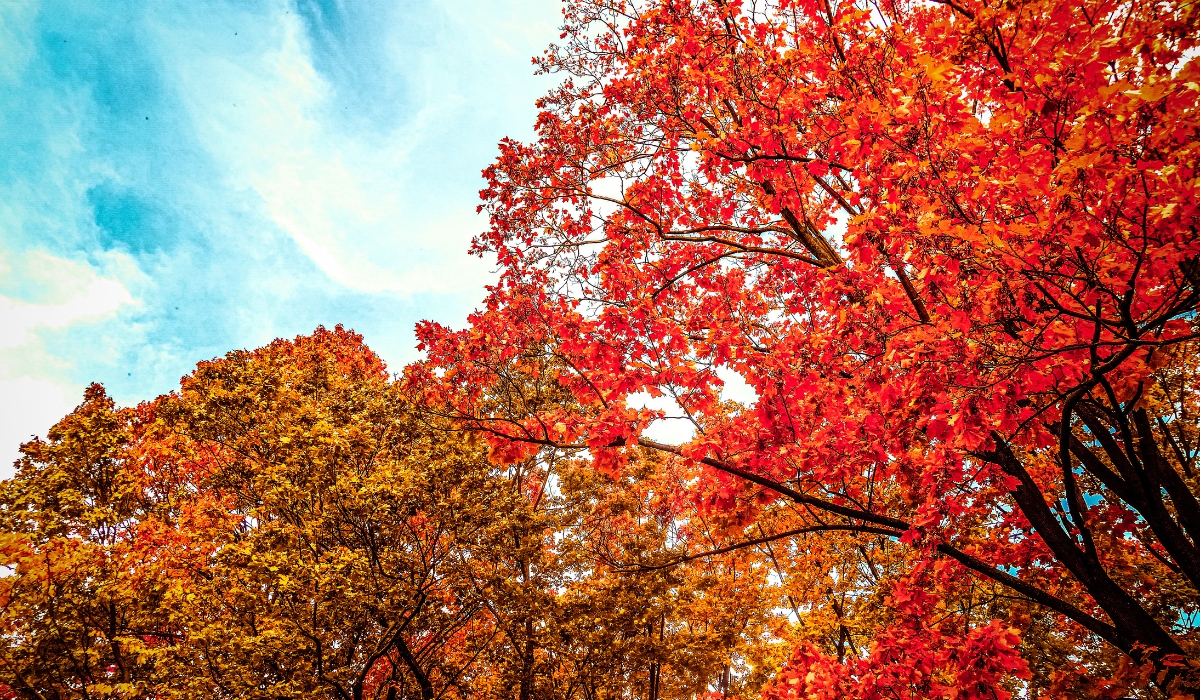
The air is getting crisper, the leaves are putting on their final, fiery show (though maybe with a little less intensity than our East Coast cousins!), and the scent of pumpkin spice is everywhere. Here in California, November marks a beautiful transition in our landscapes. While the scorching summer heat is a distant memory, it’s not quite time to huddle indoors just yet. In fact, November is a prime time to give your garden some much-needed attention and set it up for a thriving spring.
At DK Landscaping, we believe a well-maintained landscape is a year-round source of joy. So, grab a warm beverage, pull on your gardening gloves, and let’s dive into our top tips for making the most of your California garden this November!
Embrace the Post-Summer Refresh:
Summer can be tough on our plants. Now is the perfect time to assess the damage and give them some TLC:
- Deep Clean & Clear Out: Just like you might do a fall cleaning indoors, your garden needs one too! Rake up fallen leaves (they make great compost!), remove dead or diseased plant material, and clear out any lingering weeds that thrived during the warmer months. This helps prevent pests and diseases from overwintering in your garden.
- Pruning Power: Many shrubs and trees benefit from late fall pruning. Removing dead, damaged, or crossing branches improves air circulation and encourages healthy growth in the spring. Not sure where to start? Our experienced team at DK Landscaping can provide expert pruning services to ensure your plants are shaped and cared for correctly.
- Soil Love: After a long growing season, your soil might be depleted. Now is an excellent time to amend your soil with compost or other organic matter. This will improve drainage, aeration, and provide essential nutrients for the months ahead.
Watering Wisdom for Cooler Days:
While the temperatures are dropping, your plants still need water, just not as frequently as in the summer.
- Adjust Your Irrigation: Reduce your watering frequency and duration. Overwatering in cooler weather can lead to root rot. Observe your plants and the soil moisture levels to determine the right schedule.
- Water Deeply and Less Often: When you do water, water deeply to encourage strong root growth.
- Consider Rainfall: Keep an eye on the forecast! If we get a good amount of rain, you can likely skip a watering cycle.
Planting for the Future:
Believe it or not, November is a fantastic time for certain types of planting in California:
- California Natives: Many California native plants thrive when planted in the fall. The cooler, wetter conditions allow their roots to establish before the heat of summer arrives. Consider adding some beautiful and drought-tolerant natives to your landscape.
- Cool-Season Vegetables: If you enjoy fresh produce, now is the time to plant cool-season vegetables like lettuce, spinach, kale, broccoli, and garlic.
- Spring-Blooming Bulbs: Dreaming of vibrant tulips, daffodils, and hyacinths in the spring? Now is the time to plant those bulbs! They need the cool winter months to develop properly.
Don’t Forget the Details:
- Clean Your Tools: Before storing your gardening tools for the winter, clean and sharpen them. This will keep them in good condition and ready for action in the spring.
- Protect Tender Plants: If you have any frost-sensitive plants, consider moving them indoors or providing some form of protection on colder nights.
- Enjoy Your Space! Even with the cooler weather, take some time to appreciate the beauty of your fall landscape. It’s a different kind of beauty, but just as rewarding.
Ready to Give Your Landscape Some November Love?
At DK Landscaping, we’re passionate about helping you create and maintain a beautiful and healthy outdoor space year-round. Whether you need help with fall cleanup, pruning, planting, or simply want some expert advice, our team is here for you.
Contact DK Landscaping today for a consultation and let us help you fall in love with your landscape all over again this November!
Creating a Pollinator Paradise: Plants That Attract Bees and Butterflies in Rohnert Park, California
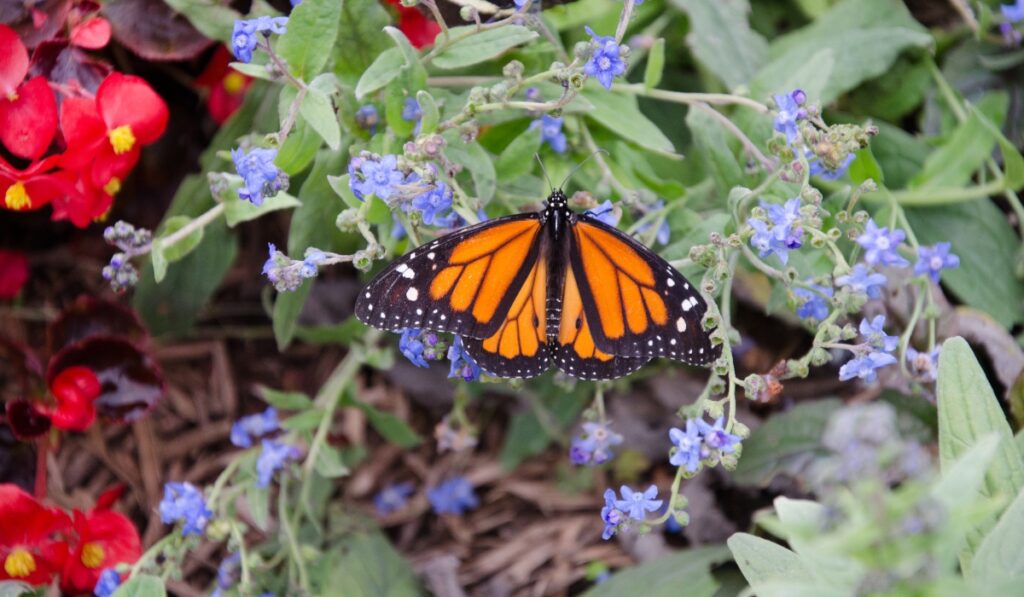
Transforming your garden into a haven for pollinators not only contributes to the local ecosystem’s health but also brings life and beauty to your yard. For residents of Rohnert Park, California, fostering a landscape that invites bees and butterflies is both a rewarding endeavor and a step toward sustainability. Here’s how you can create your own pollinator paradise with plants ideally suited for our climate and region.
Why Focus on Pollinators?
Pollinators like bees and butterflies are essential to the propagation of many plants and crops. By attracting these beneficial insects, you’re helping to support biodiversity, which is crucial for ecological balance. Plus, watching these creatures flit from flower to flower adds an element of dynamic beauty to your garden.
Choosing the Right Plants
Selecting native plants that thrive in the Rohnert Park area ensures lower maintenance, better survival rates, and a natural appeal to local pollinators. Here are some top choices to consider:
1. California Poppy (Eschscholzia californica) – This state flower is not only vibrant and drought-tolerant but also a favorite among bees. Its golden blooms add a splash of color to any garden from early spring through fall.
2. Lavender (Lavandula) – With its soothing fragrance and lovely purple spikes, lavender is irresistible to bees and butterflies. It’s also drought-resistant, making it ideal for California gardens.
3. Sage (Salvia) – There are several native sages to choose from, like Cleveland sage (Salvia clevelandii), which is highly aromatic and attracts a variety of bees and hummingbirds.
4. Manzanita (Arctostaphylos) – Early blooming manzanita provides nectar and pollen during late winter and early spring, a crucial time for many pollinators.
5. Milkweed (Asclepias spp.) – As the breeding ground for monarch butterflies, milkweed is essential for their lifecycle. It’s a must-have for any butterfly garden.
6. Sunflower (Helianthus annuus) – Bees love sunflowers, and their large, bold faces are a cheerful addition to any setting.
7. Penstemon – With their tubular flowers, penstemons are particularly attractive to hummingbirds and butterflies.
Design Tips for Pollinator Gardens
- Group Similar Plants Together: Clusters of the same plant species are more likely to attract pollinators than single plants scattered throughout the landscape.
- Provide a Water Source: A simple birdbath or even a shallow dish with rocks and water can provide pollinators with the hydration they need.
- Avoid Pesticides: Chemicals can harm the very creatures you’re trying to attract. Opt for organic pest control methods to keep your garden safe for pollinators.
- Incorporate Year-Round Blooms: Choose a variety of plants that bloom at different times throughout the year to provide a constant food source for bees and butterflies.
The Bigger Picture
By creating a pollinator-friendly garden, you’re contributing to the preservation of local wildlife and promoting ecological diversity. The beauty of such a garden is that it’s not only a sanctuary for pollinators but also a tranquil retreat for you and your family.
At DK Landscaping, we are committed to helping Rohnert Park residents create beautiful, sustainable landscapes. Contact us today to learn more about planting a pollinator paradise in your backyard, and let’s make a positive impact together!


